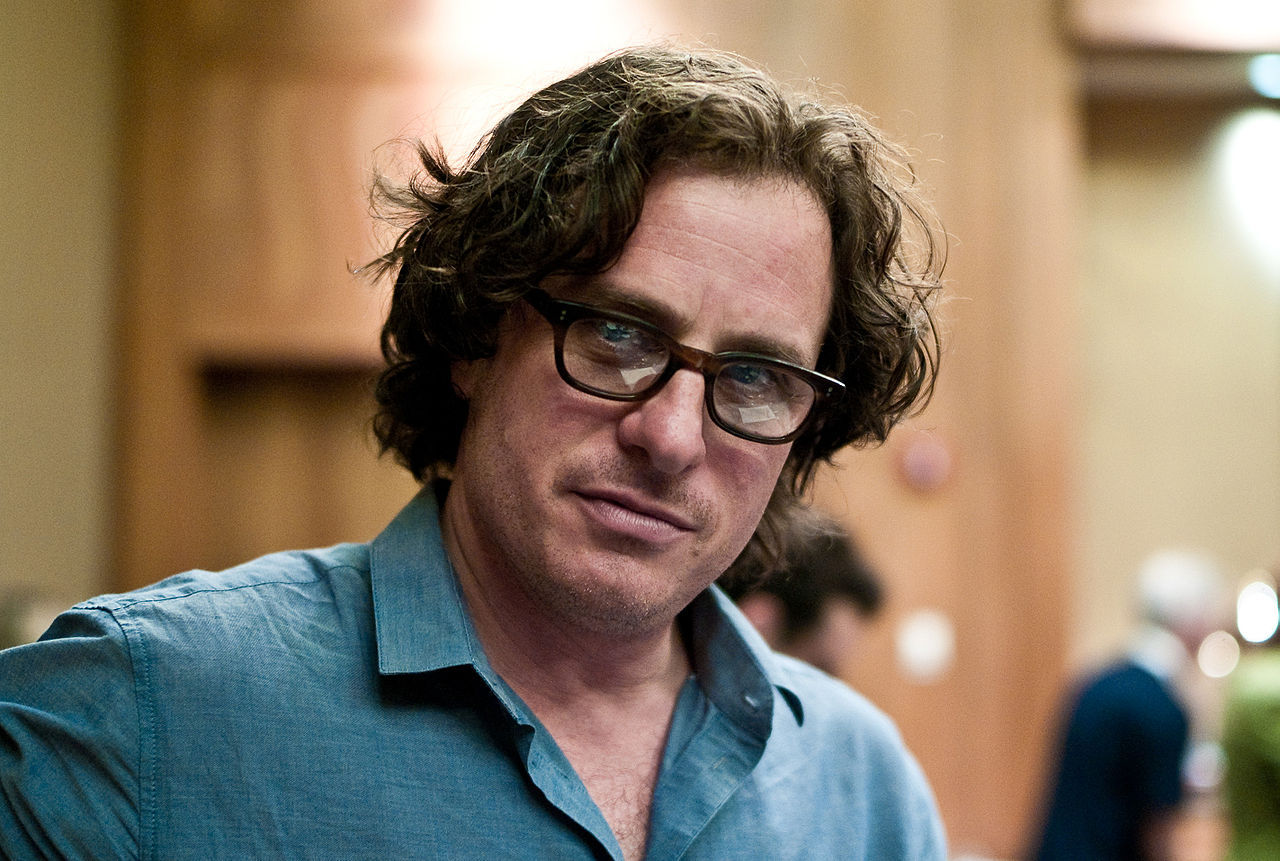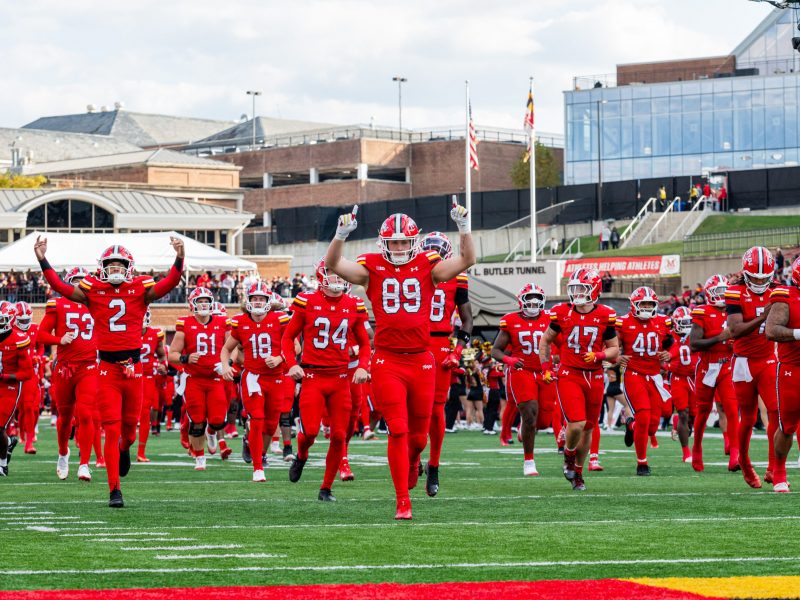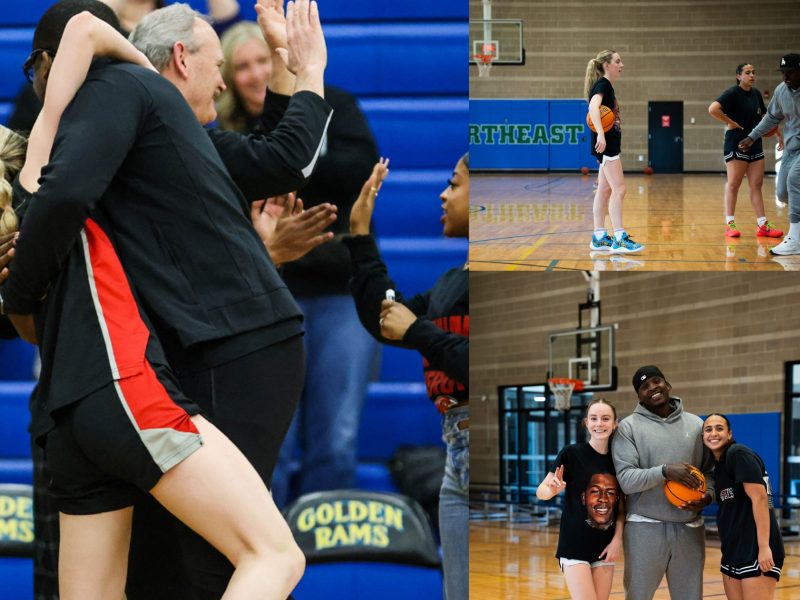
Davis Guggenheim, director of He Named Me Malala.
Josh Magness: How did this movie come about? How did you meet with Malala and her family and decide you were going to work on this?
Davis Guggenheim: The producers of the movie, Walter Parkes and Laura McDonald, who ran Dreamworks for years, they obtained the life rights to Malala to make a movie with actors. They sat down with Malala and they realized, “Wait a minute, she’s so amazing. Who would play her? What actress would play her? She’s got such an actual presence that it should be a documentary.” So they came up to L.A. and they called me.
JM: Did you feel pressure to do Malala’s story justice because it’s such a moving and interesting story that deals with a lot of important issues today?
DG: If you asked my wife, she would say this is the hardest movie I’ve ever made. I would come home worried and panicked that I wasn’t going to get it right. I really was so moved by her family — I love her family so much that I wanted to get it right.
JM: What was it like meeting Malala and her family? Was there anything you didn’t expect?
DG: My dad is Jewish; my mother is Episcopalian. I’ve met many Muslim people, but I’ve never met many Muslim families. I’ve never been so intimately in their homes. So, when I knocked on the door to her house, I didn’t know what to expect. Malala answered the door, and very soon I realized their family is exactly like my family. When you see these kitchen-table scenes in their home, they are laughing and teasing each other and arm wrestling, and you realize, “Oh, this is just like my family.” Really, the mind-blowing thing was going, “Wait a minute, this Pakistani man, this Muslim from 7,000 miles away, has a lot to teach me about being a father, especially being a father of two daughters. How do I raise my daughters to feel as powerful and confident as Malala?”
JM: One thing I liked about the movie was how it showed that there are many, many good Muslims and this is a vocal minority of people doing these heinous things, even though in America, some people are making incorrect assumptions about the faith as a whole. So, how important did you think it was to show the good side of the faith that many people don’t focus enough on?
DG: That wasn’t my agenda. It happens to the be the case, but I didn’t set out to try to make good Muslims or bad Muslims, I wanted to tell their story. I wanted to tell Malala’s story in the most truthful way possible. I think it’s a byproduct that you see in the average, ordinary family because the constant flow of negative stories from that part of the region is so depressing and wrong. The lens that captures that part of the story from the Middle East, the Muslim world, ISIS, refugees, is dark, scary and relenting and it plays on you. Even someone like me who reads up on everything, those scary images play on you and maybe you start to let them make you feel like that’s the whole story. Maybe that’s one of the reasons walking up to the house I didn’t know what I was going to see and who I was going to meet, but you soon realize they are a great, peace-loving family just like mine.
JM: What is one thing you would say you learned personally from Malala?
DG: That’s a good question. I think that your voice has power. I read about things all the time that disturb me — Black Lives Matter, Ferguson, the public school system in America, the disparity of wealth. I read about them and I’m outraged, but then I don’t do anything. This ordinary girl in a small town in the other part of the world spoke out and she risked her life for speaking out. That is so inspiring, and I think we need more of that in our society. Too many of us see injustice and we don’t say anything; we just let it go by. We say, “Someone else will deal with that. If I speak out, no one will listen,” and that’s not right.
JM: You worked on some documentaries in the past with social messages, including An Inconvenient Truth and Waiting For Superman. What fuels your passion for covering these contentious, contemporary issues?
DG: First, I have to tell stories that are interesting to me. I made a movie called It Might Get Loud about electric guitar players, but really that was about the nature of how you become an artist. If I’m not interested in my story, then my audience won’t be interested in the story I’m trying to tell. I have to be passionate about it. It’s not by choice. I’m moved by people who are doing something in the world, who are brave enough to be fighting for something good. It’s hard work making movies. It’s really hard to tell a good story. I’m traveling a lot and I’m away from my family a lot, so it better be worth it. In the end, I want my life and the stories I tell to have purpose.
JM: So, what was the most challenging part of making this movie in particular?
DG: I came up against this block because the first time I interviewed Malala — it was off-camera, just audio — she told the story of the Battle of Maiwand, the big opening of the movie where this mythical girl spoke out and was killed for speaking out, which is how [Malala] got her name. So she was named after a girl who spoke out and was killed for speaking out, and Malala spoke out and was almost killed for speaking out. As a storyteller, as someone who’s just interested, that story blows my mind. How do I tell that story? Do I have stills of the battlefield? No. Do I re-enact it? No. So what do I do? Yet I couldn’t get away from the idea of it not being in the movie. The movie is called He Named Me Malala, and that’s how she got her name. So I came up with this idea of doing full-scale animation. I actually called our funders — this company called Image Nation from Abu Dhabi — and I said I need a lot more money because I’m going to build an animation company in my office, and they said, “Yes.” So we painstakingly built this animation frame-by-frame, all hand-drawn. It was a big risk whether it would work. It’s very stylized and romantic, so how will this hold up? Will it work? I’m risking all this money, will it work?
JM: Talking about the animation, there was definitely a lot of great imagery there. I really liked the visualization of the speech and the stutter Malala’s father had. So what did you think the animation added to the movie?
DG: [Malala’s family] talk about their time in Pakistan as being very romantic — beautiful and peaceful. That’s not the imagery I could find from that part of the world, so what the animation did was it captured that emotion. It could portray scenes I was not there for and it gives the movie sort of a lyrical quality.
JM: What did you think is one distinct aspect of this movie — like cinematography, storytelling methods, the way you recorded and produced it — that varies or is most different from prior works?
DG: That’s interesting. I think one of the things is when you make a movie, you have to make a choice of what it’s about and also what it’s not about. I made a choice not to tell the geopolitical story. Why is there so much conflict in this region? The role of the U.S., the CIA, the Russian War with Afghanistan, the rise of the Taliban, the rise of fundamentalism; those things are a big part of this. I decided not to deal with that. I decided instead to tell it from the point of view of a girl and make it very personal. My last big movie was Waiting for Superman and that was much more political and really went right into the controversy.
JM: So you wanted to make it from the perspective of one person who can illuminate the issues as a whole?
DG: Definitely. I had to make it very emotional, very much from a girl’s point of view.
JM: Because this is a college paper, what do you think about this movie would specifically interest college kids? Like a pitch to make them come out and see the film.
DG: I’ve shown this movie to a lot of audiences now, and it really speaks to younger people who want to feel part of something. Certainly when I was in college, I felt a little bit lost; I didn’t know what was going to happen with my life. I wanted to feel a part of something. You could say, “Oh, Malala is this larger-than-life story. I could never be her,” but I think when you see the movie you’ll say, “She’s just like me and I want to learn more about her.” And you learn that you’re not born a hero, you actually become one when you make brave choices. Also, there’s a power in your words and there’s a deep meaning when you step in. I think in my 20s, as a college student, I didn’t step in. I was on the sidelines. It took me longer in my life to step in. I think the minute I stepped in and said, “These are the movies I want to make, these are the stories I want to tell,” suddenly, I became happier, and you see that with Malala. When you commit to something and step in, you find life much more meaningful, and I think that’s what you see in this movie.
JM: What is the lasting impact you would want from this movie?
DG: (laughs) The lasting impact! In the big picture, I believe that you can tell stories for good. There are a lot of problems in the world, but there are also many inspiring people that can lead us in the right direction. Specifically, there are 66 million girls — 66 million girls — who are out of school, and that’s not right.
JM: And this is 66 million who are doing it not by their own choice?
DG: They don’t have a choice. A lot of them are secondary education. Some of the countries educate girls to a certain point. That means when you don’t educate a girl, what are the other choices? You can get married off as a young bride, which Malala talks about in the movie and how she’d have two babies right now. So young girls get married off — 12, 13, 14 years old. Young girls are put into factory work. They become domestic servants, or worse. So, this idea of educating every girl, it’s not enough to be given a great education; it’s to fight for other people’s education. The other thing is that with all these complex problems that don’t seem to have a solution, educating people is a solution. When you educate a girl it really transforms her life and the things around them. Societies that have women in power are more civil and human rights are usually more in place. I think this is one issue that people can really rally around.
JM: Final question. The movie did a great job of humanizing Malala while showing her role as an emerging feminist icon or an icon for women’s rights. The one scene that comes to mind is when she was complaining about her low test scores and then there’s shots of her meeting President Obama, Hillary Clinton and all these big names, but she’s still this teenage girl. How hard was it to strike a balance between showing her as a regular teenage girl and also this worldwide icon?
DG: I think it’s easy to put people on a pedestal and to think, “That person is extraordinary and I could never be like that,” but Malala is an ordinary girl. She’s just like anybody. She’s just like any girl at the University of Maryland. She has her strengths and her weaknesses. She has her desires and her fears. The thing that made her extraordinary is the act of speaking out for what she believes in. That’s what makes her so amazing.



